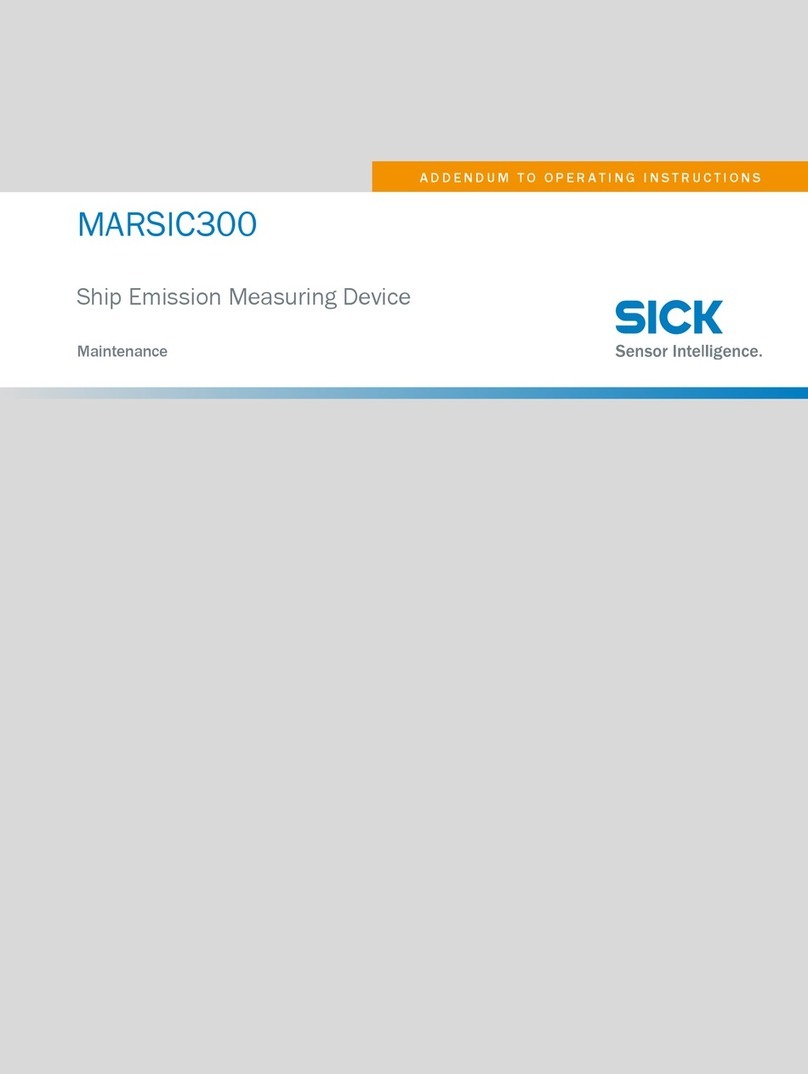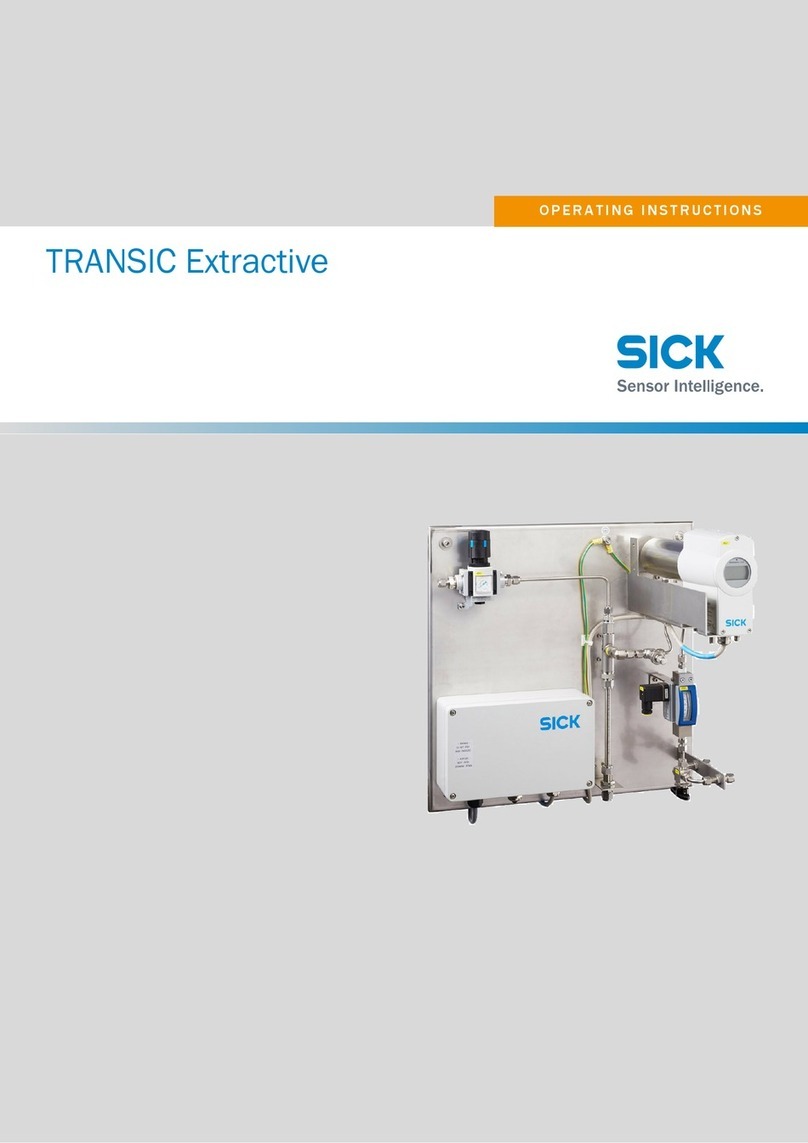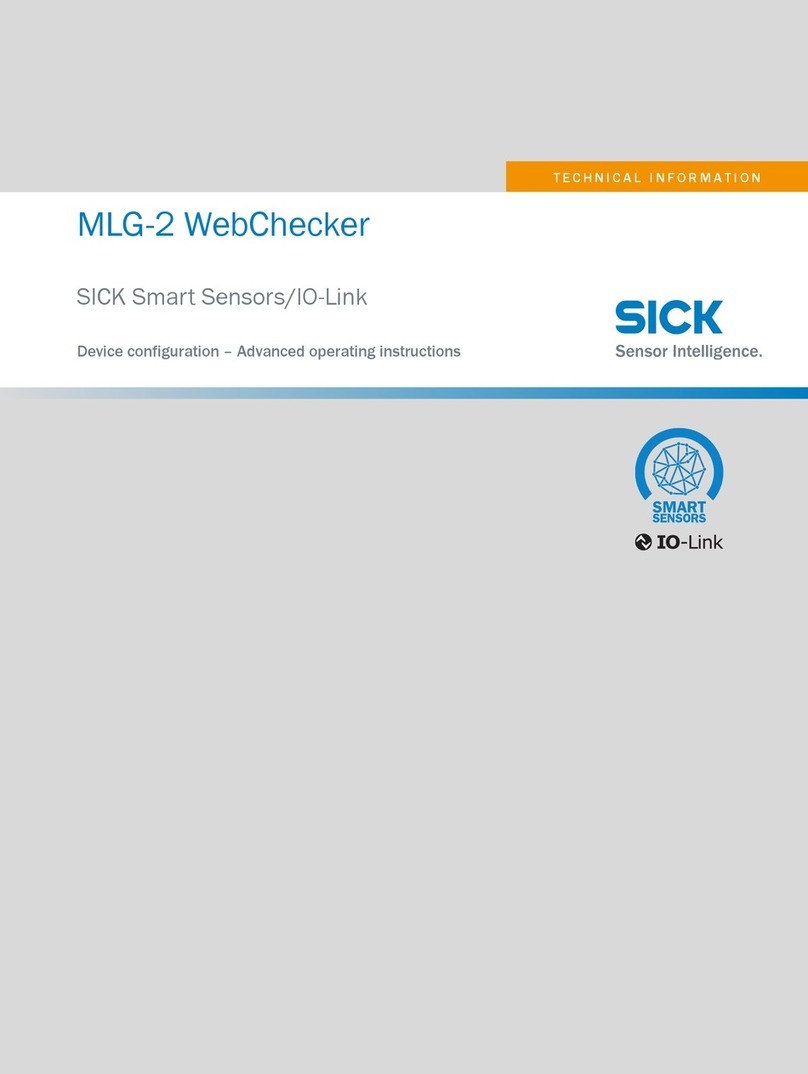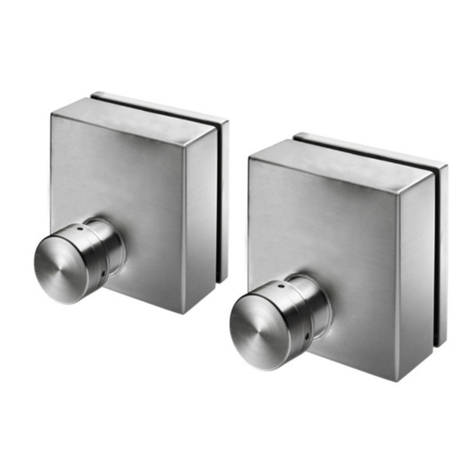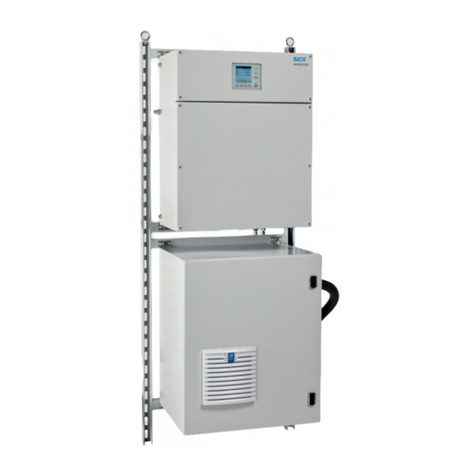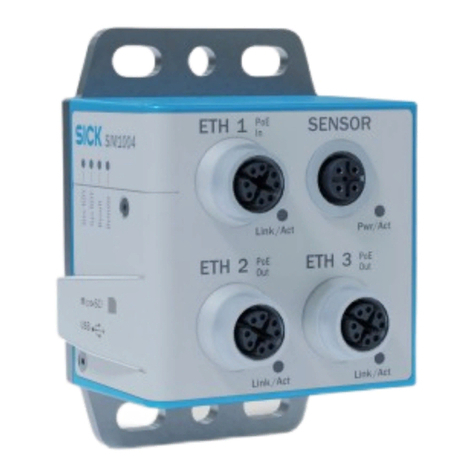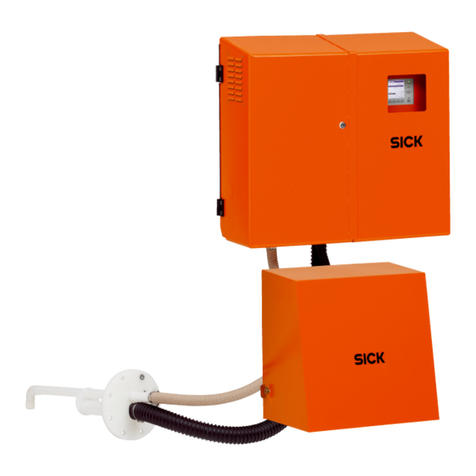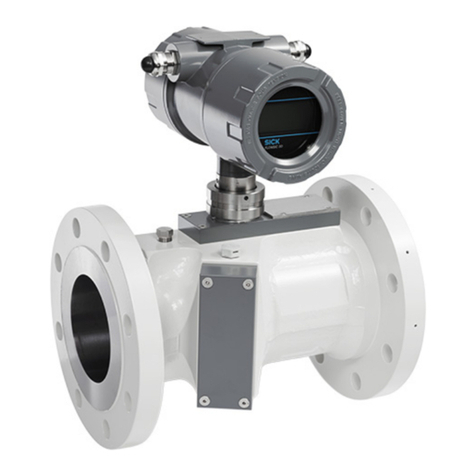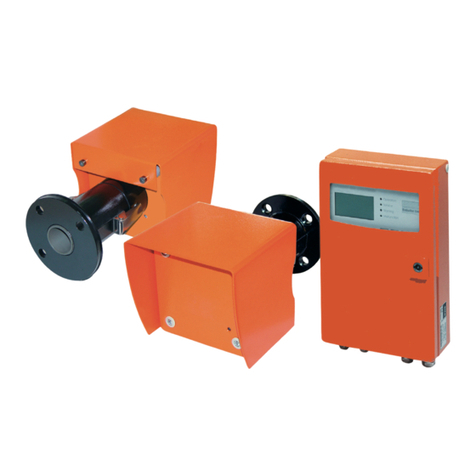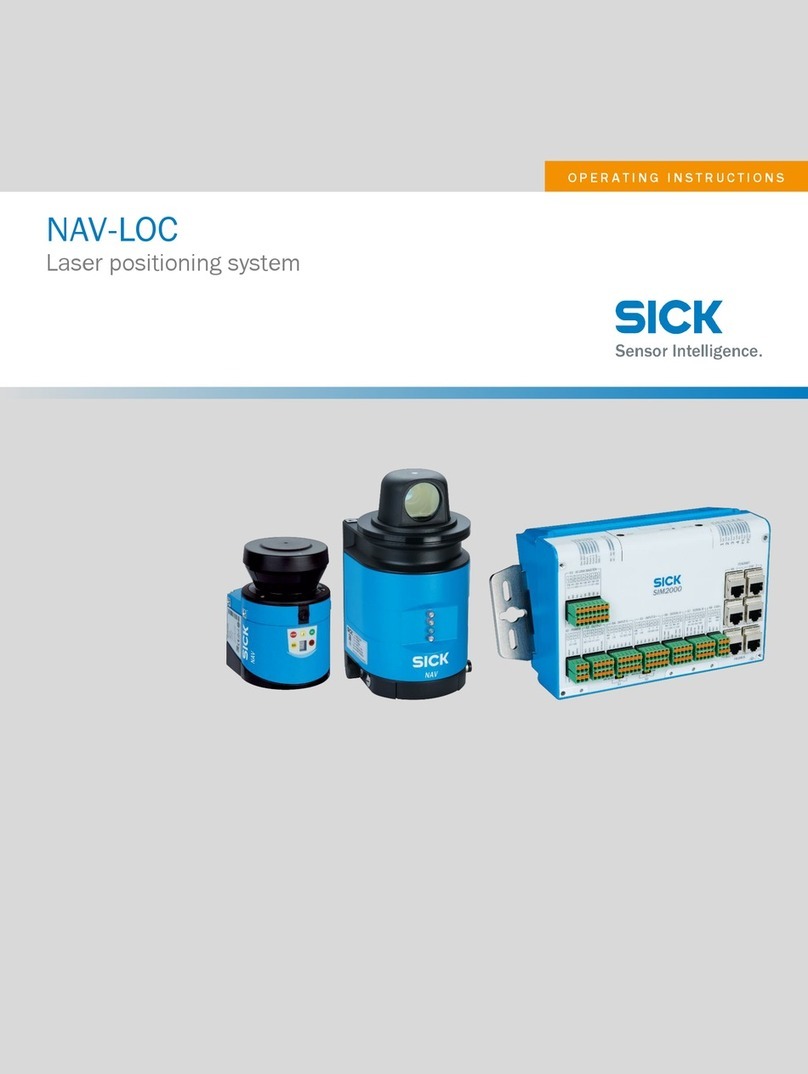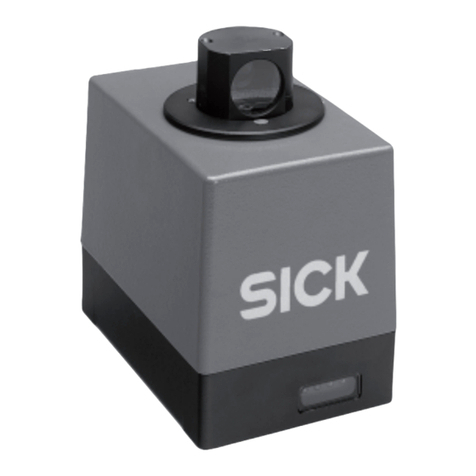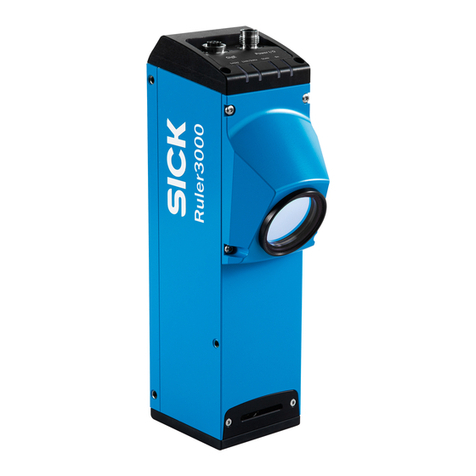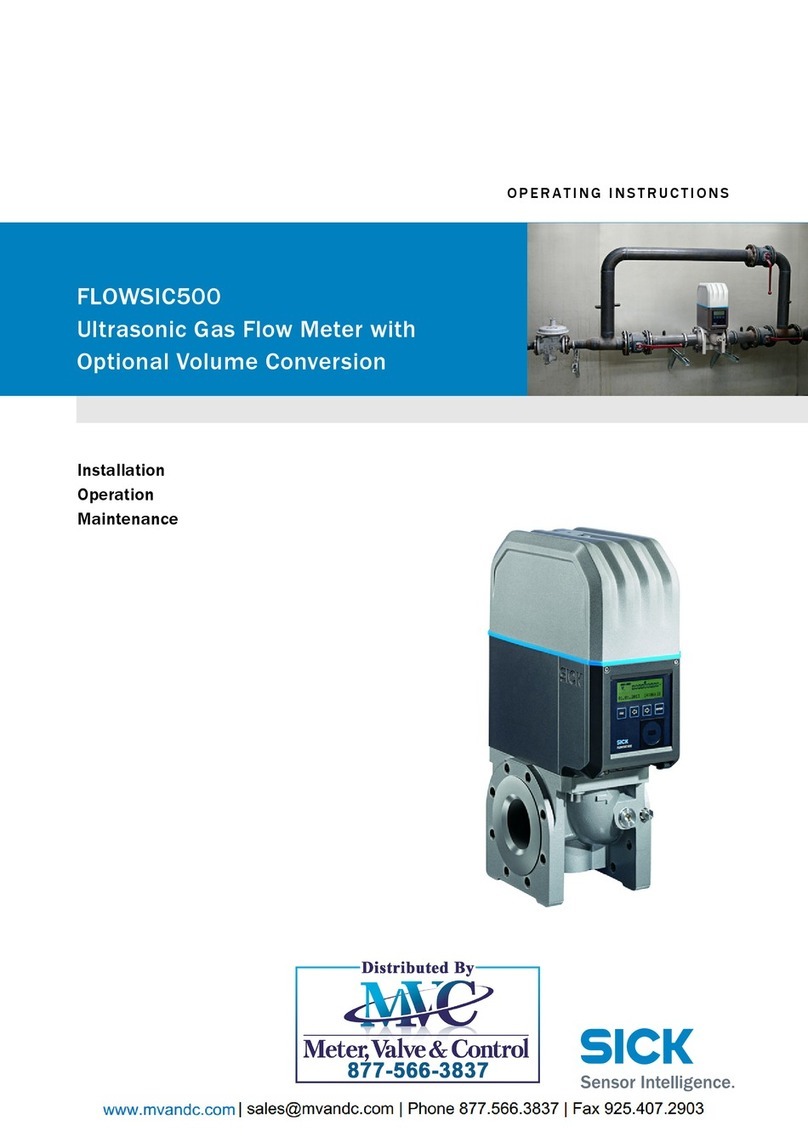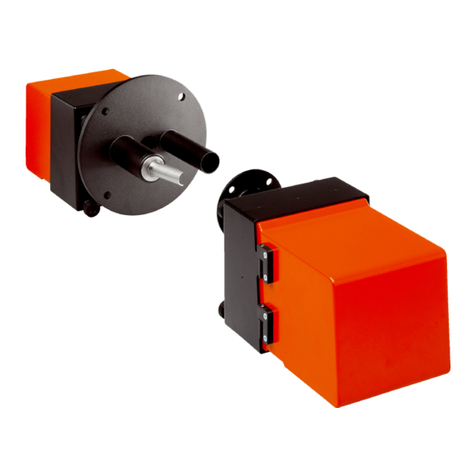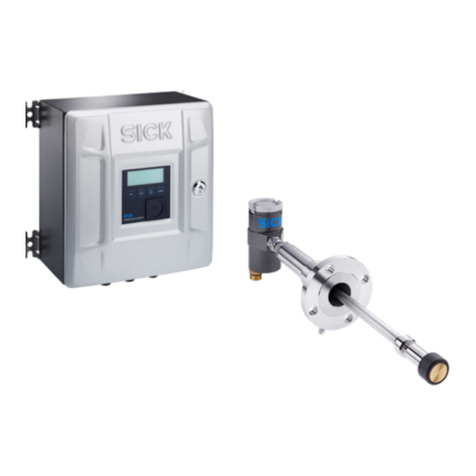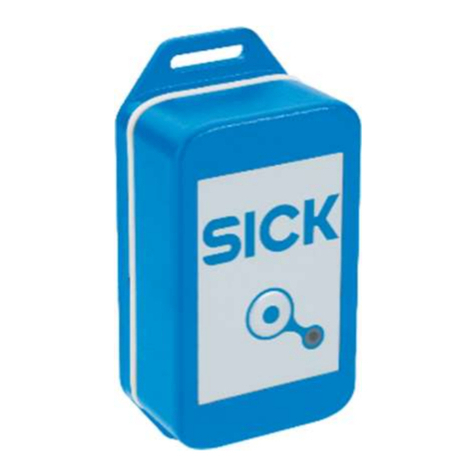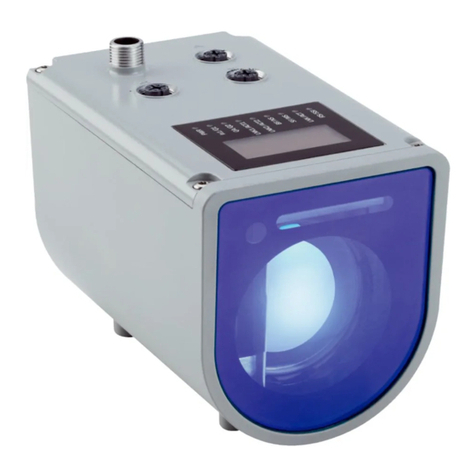
CONTENTS
68011543/YU54/V4-1/2016-04 | SICKOPERATING INSTRUCTIONS | GM700
Subject to change without notice
7.4 Maintenance work on SR-unit and reflector................................................ 64
7.4.1 Visual inspection and enclosure cleaning................................... 64
7.4.2 Cleaning the front windows on the SR-unit and on the
reflector ....................................................................................... 64
7.5 Evaluation unit (EvU) .................................................................................... 66
7.5.1 Selecting the ambient temperature range ................................. 66
7.5.2 Filter box measurement to check the measuring channels for
NH3, HF or HCl.............................................................................. 67
7.5.3 Determining the necessary test gas concentration .................... 68
7.5.4 Installing the filter box ................................................................. 68
7.5.5 Carry out filter box measurement................................................ 70
7.6 Checking the gas analyzer with test cell GMK10........................................ 71
7.6.1 Installation of the GM700 components with the test cell
GMK10.......................................................................................... 72
7.6.2 Carrying out measurement .......................................................... 73
8 Troubleshooting and Clearing Malfunctions........................................ 76
8.1 Malfunction categories/possible effects..................................................... 76
8.2 Purge air failure ............................................................................................ 76
8.3 Integrated monitoring and diagnosis system .............................................. 76
8.3.1 Display and retrieval of messages on the evaluation unit ......... 77
8.3.2 Troubleshooting and clearing malfunctions, evaluation unit..... 78
8.3.3 Error messages ............................................................................ 79
8.3.4 Warning messages ....................................................................... 81
8.3.5 Further tips on troubleshooting ................................................... 82
9 Technical Data, Expendable and Spare Parts ..................................... 83
9.1 Technical Data GM700 Cross-Duct system................................................. 83
9.2 Dimension drawing....................................................................................... 87
9.2.1 GM700 receiver unit dimensions ................................................ 87
9.2.2 GM700 reflector unit dimensions ............................................... 88
9.2.3 Purge air fixtures dimensions ...................................................... 88
9.2.4 Flanges with tube dimensions ..................................................... 89
9.2.5 Evaluation unit dimensions ......................................................... 89
9.2.6 Connection unit dimensions ........................................................ 90
9.2.7 Weatherproof cover dimensions.................................................. 90
9.3 Accessories, expendable and spare parts................................................... 92
9.3.1 Consumable parts for 2-years operation..................................... 92
9.3.2 Spare parts for the sender/receiver unit .................................... 92
9.3.3 Spare parts for the reflector unit................................................. 93
9.3.4 Spare parts for the purge air fixture (sender/receiver unit)....... 93
9.3.5 Spare parts for the purge air fixture (reflector side)................... 93
9.3.6 Spare parts for the evaluation unit ............................................. 94
9.3.7 Fixing accessories ........................................................................ 94
9.3.8 Spare parts assignment for sender/receiver unit ...................... 95
